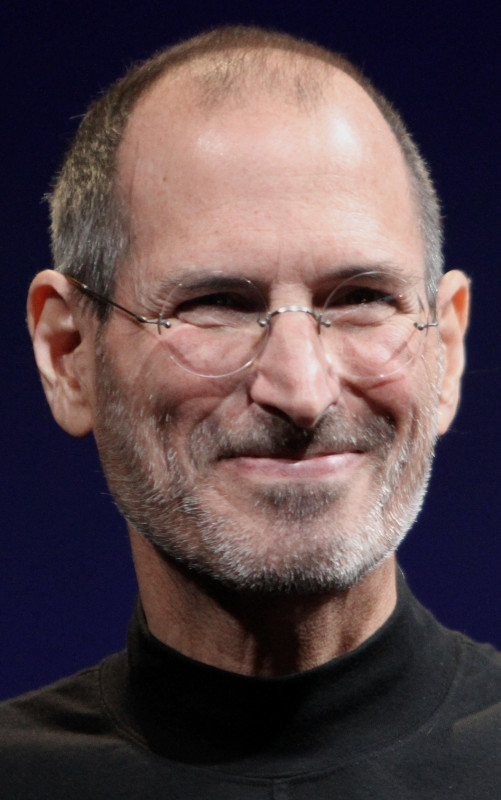Discover the career path of Steve Jobs, from the first major opportunity to industry-changing achievements.
Steve Jobs was a pivotal figure in the personal computer revolution. As co-founder of Apple Inc., he spearheaded the development of groundbreaking products, transforming the technology industry. He also founded NeXT and led Pixar to unprecedented success in animation. Jobs was renowned for his innovative vision, design aesthetic, and relentless pursuit of perfection, shaping the landscape of modern technology and entertainment.
1968: Summer Job at Hewlett-Packard
In 1968, when he was 13, Jobs was given a summer job by Bill Hewlett (of Hewlett-Packard) after Jobs cold-called him to ask for parts for an electronics project.
October 1971: Inspiration from Esquire Article
In October 1971, Wozniak was inspired by the article "Secrets of the Little Blue Box" from the Esquire magazine to create the 'blue box'.
1973: Wozniak's Pong Version
Back in 1973, Steve Wozniak designed his own version of the classic video game Pong and gave its electronics board to Jobs.
February 1974: Hired by Atari
In February 1974, Steve Jobs returned to his parents' home and was hired by Atari, Inc. as a computer technician.
1975: Creation of Breakout Circuit Board
In 1975, Jobs was assigned to create a circuit board for the arcade video game Breakout, which he collaborated on with Wozniak. Wozniak reduced the TTL count to 45 within four days.
1976: Co-founding of Apple
In 1976, Steve Jobs and Steve Wozniak co-founded Apple to develop and sell Wozniak's Apple I personal computer.
1976: Founding of Apple Computer and Production of Apple I
In 1976, Steve Jobs had the idea to sell the Apple I computer, designed by Wozniak, leading to the founding of Apple Computer. They constructed Apple I prototypes by hand, funding it by selling some of their belongings. Eventually, 200 units were produced. The Apple I included video display terminal circuitry, allowing it to connect to a low-cost composite video monitor or television.
June 10, 1977: First Sale of Apple II
On June 10, 1977, the Apple II was first sold. The Apple II is an 8-bit home computer and one of the world's first highly successful mass-produced microcomputer products.
1978: Development of Lisa Computer
In 1978, Apple began developing the Lisa, a personal computer aimed at business users. It was the first personal computer with a graphical user interface.
1979: Xerox Alto Inspiration
In 1979, Jobs saw the commercial potential of the Xerox Alto, which had a mouse-driven interface and a GUI.
1982: Jobs Takes Over Macintosh Project
In 1982, after being forced out of the Lisa project, Steve Jobs took over the Macintosh project, incorporating inspiration from the Lisa. The final Lisa 2/10 was modified and sold as the Macintosh XL.
1983: Development of Apple Lisa
In 1983, the Apple Lisa was developed, though it was largely unsuccessful.
1984: Launch of Macintosh
In 1984, the Macintosh was launched, becoming the first mass-produced computer with a GUI.
1985: Departure from Apple and Founding of NeXT
In 1985, Jobs departed Apple after a power struggle and founded NeXT, a computer platform development company.
1985: Jobs Starts NeXT
In 1985, after being forced out of Apple, Steve Jobs started NeXT, a workstation computer company.
1985: Desktop Publishing Industry Launch
In 1985, the desktop publishing industry was launched with the addition of the Apple LaserWriter.
1986: Acquisition of Pixar
In 1986, Jobs bought the computer graphics division of Lucasfilm, which was spun off as Pixar.
1986: Jobs Funds the Spinout of Pixar
In 1986, Steve Jobs funded the spinout of The Graphics Group from Lucasfilm's computer graphics division for $10 million, renaming it Pixar.
October 12, 1988: NeXT Computer Launch
On October 12, 1988, the NeXT computer was unveiled at a lavish, invitation-only gala launch event held at the Louise M. Davies Symphony Hall in San Francisco. The event was considered Steve Jobs's comeback and was described as a multimedia extravaganza.
1988: Introduction of the NeXT Computer
In 1988, the NeXT Computer was introduced at a lavish launch event. The world's first web browser, WorldWideWeb, was created using the NeXT Computer. The NeXT Computer's operating system, NeXTSTEP, begat Darwin, which is now the foundation of most of Apple's operating systems.
1990: Release of NeXT Workstations and Invention of the World Wide Web
In 1990, NeXT workstations were first released, priced at $9,999. Also in 1990, English computer scientist Tim Berners-Lee invented the World Wide Web using a NeXT computer at CERN in Switzerland.
1990: Release of the Second Generation NeXTcube
In 1990, the revised, second generation NeXTcube was released. Jobs touted it as the first "interpersonal" computer that would replace the personal computer. With its innovative NeXTMail multimedia email system, NeXTcube could share voice, image, graphics, and video in email for the first time.
1993: NeXT Transitions to Software Development
In 1993, after selling only 50,000 machines, NeXT transitioned fully to software development with the release of NeXTSTEP/Intel.
1994: NeXT Reports First Yearly Profit
In 1994, NeXT reported its first yearly profit of $1.03 million.
1995: Release of Toy Story
In 1995, Pixar produced the first computer-animated feature film, Toy Story.
1996: Apple was struggling and depended on completing its next operating system.
In 1996, Jobs's former company Apple was struggling and its survival depended on completing its next operating system. After failed negotiations to purchase Be Inc., Apple eventually came to a deal with NeXT in December for $400 million
1996: Release of WebObjects
In 1996, NeXT Software, Inc. released WebObjects, a framework for Web application development.
February 1997: Finalization of Apple's Acquisition of NeXT
In February 1997, Apple finalized its deal to acquire NeXT for $400 million, bringing Steve Jobs back to the company he had cofounded.
July 1997: Jobs Becomes De Facto Chief of Apple
In July 1997, Steve Jobs became de facto chief of Apple after then-CEO Gil Amelio was ousted.
1997: Return to Apple as CEO
In 1997, Steve Jobs returned to Apple as CEO after Apple's acquisition of NeXT.
1997: Return to Apple and elimination of philanthropic programs
Upon his 1997 return to Apple, Steve Jobs optimized the failing company to the core, such as eliminating all philanthropic programs, never to be restored.
March 1998: Jobs Terminates Several Projects at Apple
In March 1998, to concentrate Apple's efforts on returning to profitability, Steve Jobs terminated several projects, such as Newton, Cyberdog, and OpenDoc.
1998: Introduction of the iMac G3
In 1998, Apple's iMac G3 was introduced, featuring an innovative design directly resulting from Steve Jobs's return to Apple. The iMac's changes included eschewing the floppy disk drive and moving exclusively to USB for connecting peripherals.
1999: Board Member at Gap Inc.
From 1999, Steve Jobs was a board member at Gap Inc.
1999: Introduction of Graphite Gray Apple iMac
In 1999, Apple introduced the Graphite gray Apple iMac. The shape, color and size have since varied, but it maintained the all-in-one design. Design ideas were intended to create a connection with the user such as the handle and a "breathing" light effect when the computer went to sleep. The Apple iMac sold for $1,299 at that time.
2000: Jobs Becomes Permanent CEO of Apple
At the 2000 Macworld Expo, Steve Jobs officially dropped the "interim" modifier from his title at Apple and became permanent CEO.
October 23, 2001: Release of the First Generation iPod
On October 23, 2001, the first generation of iPod was released. Its small size was achieved by using a 1.8" hard drive. The introduction of the iPod resulted in Apple becoming a major player in the music industry and prepared the way for the iTunes music store and the iPhone.
2001: Release of Monsters, Inc.
In 2001, Pixar released Monsters, Inc., which became a box-office hit.
2002: End of term as Board Member at Gap Inc.
Until 2002, Steve Jobs was a board member at Gap Inc.
January 2004: Jobs Announces He Will Not Deal with Disney Again
In January 2004, Steve Jobs announced that he would never deal with Disney again after failed negotiations with Disney's chief executive, Michael Eisner, to renew Pixar's contract. Negotiations had been attempted in 2003.
August 2006: WWDC Keynote and Health Speculation
In August 2006, Steve Jobs delivered the keynote at Apple's Worldwide Developers Conference (WWDC). His thin appearance and listless delivery led to media and internet speculation about his health. Despite this, an Apple spokesperson stated that "Steve's health is robust."
2006: Apple Expands Recycling Programs
In 2006, Apple further expanded its recycling programs to any US customer who buys a new Mac, including shipping and environmentally friendly disposal of old systems.
2006: Jobs Emailed All Employees When Apple's Market Capitalization Rose Above Dell's
In 2006, Jobs emailed all employees when Apple's market capitalization rose above Dell's.
June 29, 2007: Introduction of the iPhone
On June 29, 2007, Apple entered the cellular phone business with the introduction of the iPhone, a multi-touch display cell phone, which also included the features of an iPod and revolutionized mobile browsing.
July 2008: Release of the iPhone 3G
In July 2008, Apple released the iPhone 3G. It featured support for GPS, 3G data, and tri-band UMTS/HSDPA.
September 2008: Jobs Responds to Death Rumors
In September 2008, at Apple's Let's Rock keynote, Steve Jobs responded to the death rumors by paraphrasing Mark Twain, saying, "The reports of my death are greatly exaggerated." He later presented his blood pressure as "110/70" to further dismiss health concerns.
December 16, 2008: Schiller to Deliver Macworld Keynote
On December 16, 2008, Apple announced that Phil Schiller would deliver the company's final keynote address at the Macworld Conference and Expo 2009, renewing concerns regarding Steve Jobs's health.
2008: Health Concerns Following WWDC Keynote
In 2008, similar concerns arose following Steve Jobs's WWDC keynote address. Apple officials attributed his condition to a "common bug," while others speculated it was due to the Whipple procedure. Despite repeated questions, Jobs's health was largely dismissed as a "private matter" by Apple, while some believed shareholders had a right to know more.
January 14, 2009: Jobs Announces Leave of Absence
On January 14, 2009, Steve Jobs announced in an internal Apple memo that his health-related issues were more complex than initially thought and that he would take a six-month leave of absence until the end of June 2009.
June 2009: Introduction of the iPhone 3GS
In June 2009, Phil Schiller introduced the iPhone 3GS. The improvements included voice control, a better camera, and a faster processor.
June 2009: End of Jobs' Leave of Absence
June 2009 marked the end of Steve Jobs' six-month leave of absence, which he had taken to focus on his health. Tim Cook served as acting CEO during this period.
April 3, 2010: Release of the First iPad
On April 3, 2010, the first iPad was released. It is an iOS-based line of tablet computers designed and marketed by Apple.

October 2011: Introduction of the iPhone 4s
In October 2011, the iPhone 4s was introduced. A major feature of the iPhone 4s was Siri, a virtual assistant capable of voice recognition.
2011: Apple Becomes World's Most Valuable Company
In 2011, the success of Apple's unique products and services propelled it to become the world's most valuable publicly traded company.
2012: Release of Brave and Tribute to Jobs
In 2012, Brave, Pixar's first film produced since Steve Jobs's death, was released and honored him with a tribute for his contributions to the studio.
Mentioned in this timeline
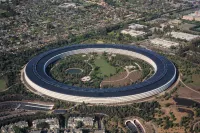
Apple Inc founded in and headquartered in Cupertino California is...
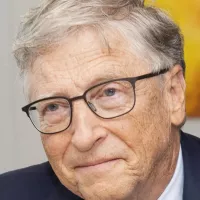
Bill Gates an American businessman and philanthropist revolutionized personal computing...

Robert Iger is an American media executive known for his...

Barack Obama the th U S President - was the...

Wayne Gretzky a Canadian former professional ice hockey player widely...
California is a U S state on the Pacific Coast...
Trending

9 months ago Kevin Kiley faces constituent pressure, hosts virtual town hall after criticism.

2 months ago Rachel McAdams and Dylan O'Brien stranded in Sam Raimi's island horror-thriller Send Help.
16 days ago Winter Weather Advisory: Freezing Rain and Icy Roads Expected in North Carolina
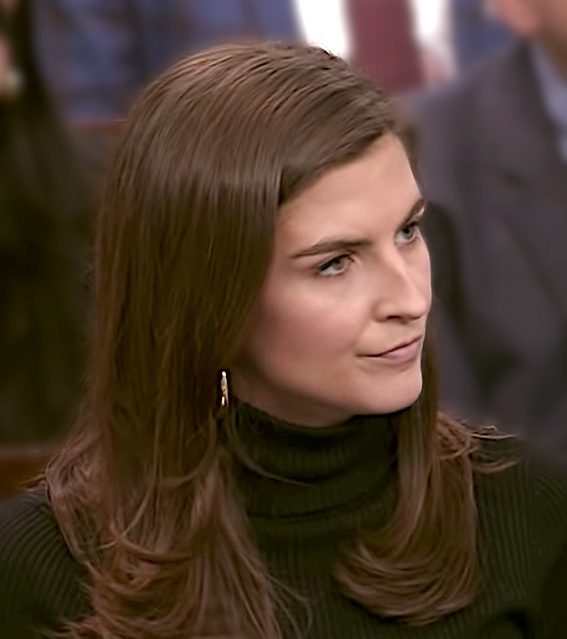
2 months ago Kaitlan Collins Praises Karoline Leavitt; CNN to Host AOC and Sanders Town Hall
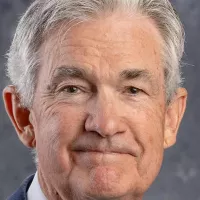
2 months ago Investors Await Jerome Powell's Analysis on Inflation and Jobs Impacting Wall Street.

6 months ago GOP Lawmakers Unveil 'Golden Dome' Defense Plan: Katie Britt's Role Highlighted
Popular

Candace Owens is an American conservative political commentator and author...

Ilhan Omar is an American politician currently serving as the...

XXXTentacion born Jahseh Dwayne Ricardo Onfroy was a controversial yet...

Tucker Carlson is an American conservative political commentator known for...

Charles James Charlie Kirk was a prominent American right-wing political...

Bill Gates an American businessman and philanthropist revolutionized personal computing...
